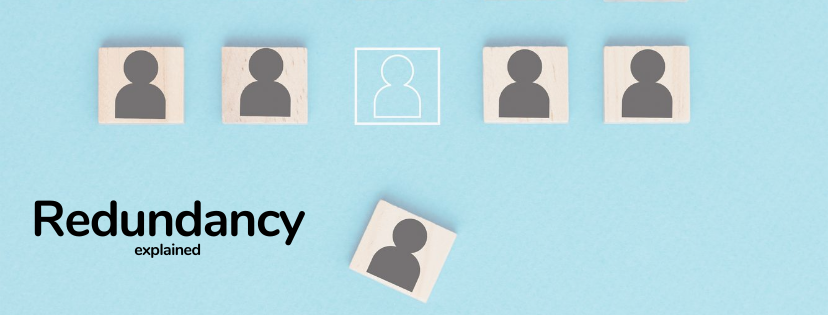Who Pays Redundancy Money? An In-depth Overview for Employers and Employees
Who Pays Redundancy Money? An In-depth Overview for Employers and Employees
Blog Article
Examining the Interaction Between Firm Redundancy and Business Flexibility for Future Development
In the dynamic landscape these days's business world, the detailed relationship between company redundancy and organizational versatility becomes a crucial variable for sustained growth and success. Firms typically face the challenge of striking a delicate equilibrium between maintaining a level of redundancy to alleviate risks and promoting versatility to react quickly to the ever-evolving market demands. This delicate interplay holds the key to not only making it through in rough times but likewise growing despite uncertainty. As we discover the multifaceted measurements of this interaction, intriguing insights into how companies navigate these intricacies to lead the method for future growth await.
Relevance of Business Redundancy
Company redundancy is a critical element that enhances organizational resilience and minimizes operational risks. By including redundancy procedures within the organizational structure, business can better endure unforeseen disturbances and changes in the company setting. Redundancy works as a calculated barrier, enabling companies to adjust and respond properly to unforeseen challenges without endangering essential procedures.
One key aspect of the value of company redundancy is its role in making sure connection during times of dilemma. When confronted with abrupt modifications or emergency situations, redundant systems, sources, or personnel can action in to preserve critical features and protect against prevalent disturbances. This continuity not only safeguards the business's online reputation and customer depend on yet also reduces economic losses and functional downtime.
Techniques for Business Versatility

Producing adaptable organizational structures that permit for fast modifications to market dynamics and customer needs is essential for staying affordable in a quickly progressing atmosphere. By proactively identifying potential disturbances and chances, organizations can proactively flourish and adapt in an ever-changing company landscape.
Balancing Redundancy and Adaptability
Achieving an unified equilibrium between functional redundancy and organizational flexibility is critical in browsing the complexities of a dynamic organization environment. Striking the ideal equilibrium between redundancy and versatility is a fragile process that needs a deep understanding of the company's objectives, industry characteristics, and threat tolerance.
To achieve this balance, companies require to conduct regular evaluations of their operations to identify areas where redundancy is needed for danger reduction and where flexibility can drive technology and development. Implementing flexible frameworks, browse around this site promoting a society of continual learning and enhancement, and motivating open communication across all levels of the organization are key techniques to harmonize redundancy and adaptability efficiently. By aligning these two vital aspects, business can position themselves for sustainable development and success in an ever-changing organization landscape.
Study on Adjustment Success
In checking out circumstances of successful organizational adaptation, it becomes obvious that the interaction in between operational redundancy and versatility is a specifying variable in shaping resilient companies. A DVD rental service, Netflix showed exceptional flexibility by transitioning right into a streaming system when digitalization interfered with the sector. These situation research studies emphasize the relevance of functional redundancy combined with business versatility in promoting lasting growth and competitiveness.
Building Durability for Future Growth
Structure strength for future growth requires a critical positioning of operational procedures with market dynamics and arising patterns. Firms need to adapt to transforming atmospheres by cultivating a culture of flexibility, advancement, and constant improvement.
Moreover, promoting solid connections with stakeholders, such as their explanation customers, workers, suppliers, and the area, is crucial for weathering uncertainties and keeping count on and assistance during unstable times. Reliable communication and openness play a vital function in building durability, as they help assist in and align expectations partnership in browsing uncertainties.
Moreover, companies need to focus on learning and development efforts to upskill staff members and equip them with the required devices to adjust to changing situations. By purchasing their labor force, firms can enhance their versatility and dexterity, inevitably strengthening their resilience for sustainable future growth.
Final Thought

In the dynamic landscape of today's business world, the detailed connection in between company redundancy and business flexibility emerges as a critical element for sustained development and success. Companies typically face the challenge of striking a fragile equilibrium between preserving a degree of redundancy to mitigate dangers and cultivating adaptability to respond quickly to the ever-evolving market needs.To achieve this balance, business require to conduct regular evaluations of their procedures to recognize areas where redundancy is required for danger reduction and where adaptability can drive development and growth.In verdict, the interplay between company redundancy and organizational versatility is critical for future development. Building resilience through a combination of redundancy and versatility will certainly make sure discover here that firms are prepared for the obstacles of the future.
Report this page